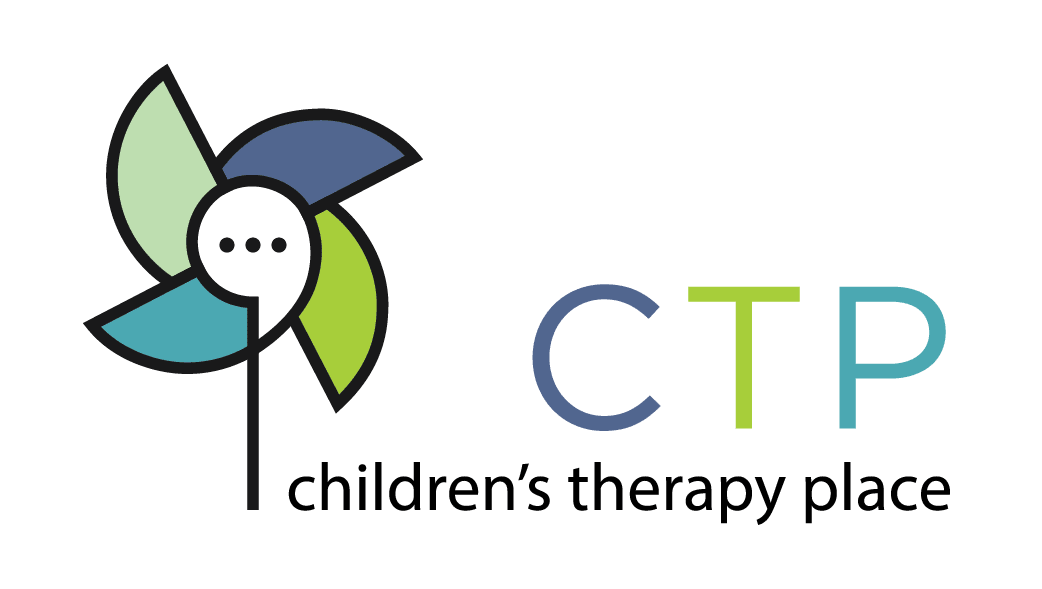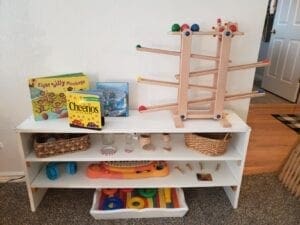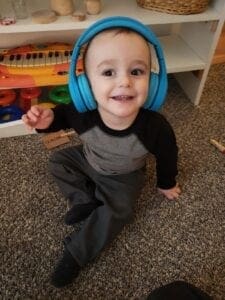Preparing the Environment to Support Emerging Language
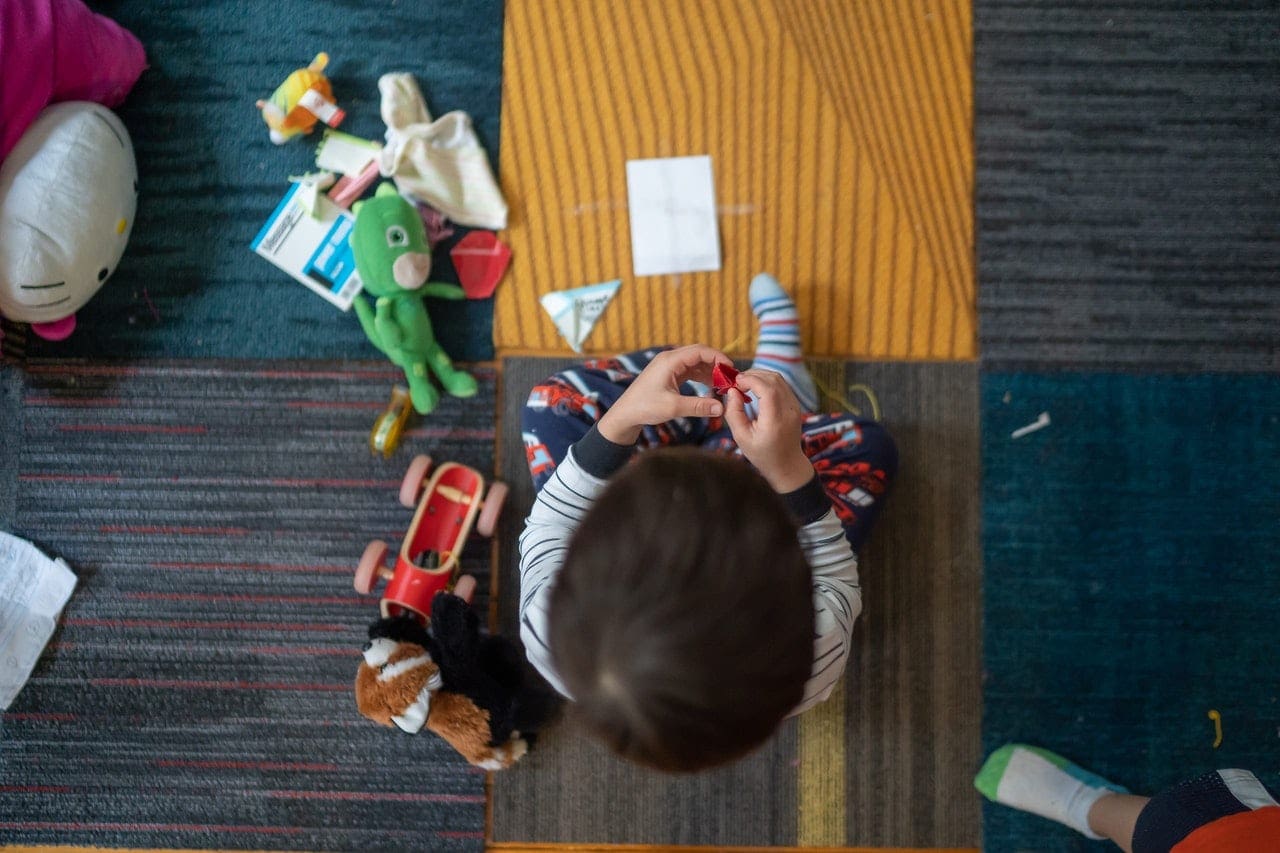
by Taylor Wiest, M.S, CCC-SLP
As an SLP working in early intervention, I am often asked by clients what they can do to help support their toddler’s vocabulary growth and functional language use. One age-appropriate way to do this is to set up your child’s environment to target high frequency, core vocabulary words! This means that with a little thought and preparation, you can help create opportunities for your child to learn and practice words that they can use across different settings for different purposes.
For example, let’s look at the word ‘on’. How and when is this word used? We can talk about turning the light ‘on’, putting our shoes ‘on’ or placing more crackers ‘on’ our plate. By working on this one word we are able to give the child a way to communicate ideas, wants and needs in different locations throughout the day. We give them a tool that they can use to help communicate more functionally in a wider variety of ways than if we had worked on, let’s say, the word ‘dinosaur’. The key difference between ‘dinosaur’ word (a fringe vocabulary) and ‘on’ (a core vocabulary word) is the amount of opportunities you have to use that word throughout the day. While a child may be very motivated by dinosaurs, that word will always be specific to more limited contexts so it is recommended that you target more general core vocabulary words early on! And if you HAVE to tie in dinosaurs, you can always talk about putting dinosaur nuggets ON your child’s plate 😊
So, the question is how do we set up our environment to create ample opportunities for our child to learn what this word means and to practice using it? One way I have found that works well is setting up a play area that is designed to specifically target the word or words you are trying to teach. To continue with our previous example, if I am working on the word ‘on’, I can pull out a few toys that turn ON, I can include blocks for building (“put ON top!”), I can have a doll for dressing up (“shoes are ON!”) and I can put out some stickers and construction paper (“put ON the paper!”). Whatever toys or activities you have on hand that target the word ‘on’ will work wonders! The reason that this method is effective is that it allows for the child to have loads of interaction and practice with the target word, allows for the parent to teach the word in a fun and contextual way and naturally allows for lots of repetition and modeling: two evidence-based methods of teaching new vocabulary in the emergent language population!
The way that I personally use this method is by setting up a toy shelf in my toddler’s play area that has a central theme. If we are working on “on” and “off” I will only include toys on the shelf that help me to target this concept. If we are working on core vocabulary for a specific season, I make sure to include lots of engaging materials to hit on that topic (think: ‘cold’, ‘leaves’, ‘squirrel’, ‘winter’ for February!). I will also include age appropriate books that touch on the same concept as another modality of introducing the target word/theme. The more senses you can stimulate, the better! I can feel and hear the crunchy leaves, I can smell the pinecone, I can feel the soft fur on the pretend squirrel’s tail. When a child’s senses are activated while learning new words, the memory of that experience is more salient and thus more likely to be remembered and easily accessed during subsequent interactions. The possibilities are endless! You can do as much or as little as you want with this concept and it is easily done without purchasing anything new. All it takes is a bit of preparation and you can create your own stimulating language environment in no time!
Check out below for some ideas I use!
Activity Shelf
Ball Shoot

We work on modeling the word “on” each time we place a ball on the ball shoot. This same toy can also be used to work on the word “down”. Most of the toys we have are very versatile for exactly this reason!
Books
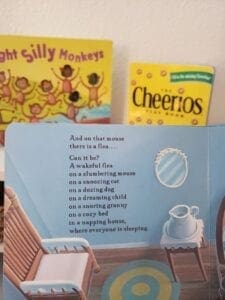
The books I pulled for this set up provide many repetitions of “on” or allow for interactive activities with the target word.
Ice Cream
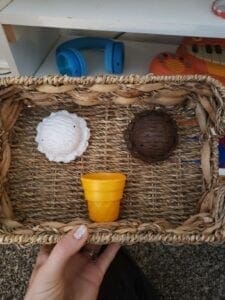
Another fun toy used to model the target word! This set comes with many different colors but I have purposefully only set out a few for this activity. Limiting the amount of items you have available helps the child remain focused and intentional.
Toys
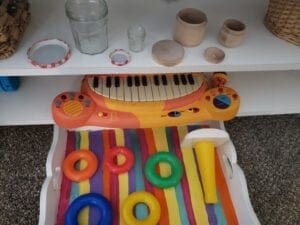
These toys offer a variety of ways to interact with and learn the meaning of the word ‘on’. Providing your toddler with different ways to explore target words helps to solidify their understanding by building a foundation of memories about what that word means. For example, I can put the lids ON different types and sizes of containers. I can turn the piano ON. I can put the rings ON the stacker. Each new experience helps to shape my understanding of what exactly “on” means.
Clips
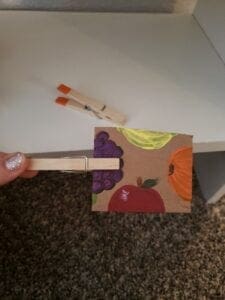
This is a prime example of using inexpensive, household items to work on learning a new word. I have painted a piece of cardboard with different fruits and used clothes pins that are painted with a corresponding color to work on putting them ON. This could easily be done without any painting or extra fuss. The reason I chose to paint mine is that I plan to use this in the future to work on color matching or identifying different fruits! I generally try to avoid toys that have a single function and gravitate towards more simple, open ended toys to encourage language development!
Headphones
